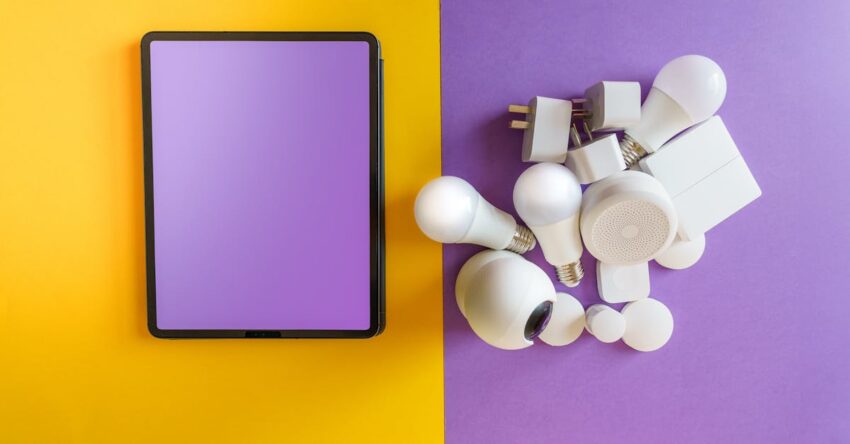Imagine walking into your home, and with just a simple voice command, your lights dim, your favorite music plays, and the thermostat adjusts to the perfect temperature. This is the magic of Smart Home Connectivity, where technology transforms daily life into a seamless experience. Whether you’re just diving into the world of home automation or you’re enhancing your existing setup, you can discover how to integrate smart devices easily and effectively.
Using IoT devices and wireless technology, your dream of a connected home is within reach. You might be wondering how to bridge various smart home products or make the most of your home network setup. By exploring smart home integration techniques, you not only simplify your life but also make your home more efficient. From DIY smart gadgets to employing open source approaches, the right solutions can bring your home to life.
Curious about how to transform your smart home into a fully integrated ecosystem? Dive into the complete guide and discover practical tips and insights that will make your home not just smart, but brilliantly connected. Let’s embark on this journey to turn your home into a seamless, connected space.

Photo provided by Jakub Zerdzicki on Pexels
Inside the article
Embrace Smart Home Connectivity
Leverage IoT Devices
When transforming your home, choosing the right IoT devices is essential. Think about what you need most. Is it a smart thermostat to control your home’s climate or smart lights for convenience? The selection of devices will set the foundation for your home automation journey. Always ensure the devices you pick are compatible with each other and the systems you plan to use. This compatibility will make your smart home setup smoother.
Utilize Wireless Technology
Wireless technology is vital for a connected home. You will want to ensure a strong and reliable signal throughout your home. Consider placing your router in a central location. This helps distribute the wireless signal evenly. Installing wireless extenders might be necessary in larger homes to reach all corners effectively. This way, you can maintain wireless smart home connectivity and enjoy seamless operation of your devices.
Master Home Network Setup
Your home network setup plays a critical role in smart home integration. Start by configuring your routers correctly. Make sure your network is secure with a strong password. Adding network extenders can help in areas with weak signal. An effective home network setup will aid in keeping your IoT devices connected and functioning efficiently.

Photo provided by George Milton on Pexels
Easily Achieve Smart Home Integration
DIY Smart Gadgets
If you enjoy hands-on projects, creating DIY Smart Gadgets can be a fun way to enhance your smart home. Installing a smart garage door opener or smart light switches can be a good start. These gadgets not only add functionality but are also great DIY smart home projects. You can choose the gadgets that best fit your daily routines and needs.
Explore Home Automation
Home automation lets you control various aspects of your home automatically. Set up routines such as turning off lights when you leave or adjusting the thermostat at night. Automating these tasks ensures your home runs efficiently and can save you time and energy. Explore different automation options to find what suits your lifestyle best. Smart home devices offer diverse solutions to automate tasks around your house seamlessly.
Effective Smart Home Applications
Smart home applications are the heart of control for your devices. Choose applications that provide a user-friendly interface and comprehensive control. Many apps allow for centralized control of different devices from one place. This eases the process of managing your home. A well-selected app will simplify your smart home integration.

Optimize Your Connected Home Solutions
Smart Home Connectivity Tips
Regularly updating your devices is key to maintaining a secure and efficient smart home. These updates can fix bugs and enhance performance. Checking for updates frequently ensures your devices operate with the latest security protocols, thus reducing vulnerabilities. This practice helps maintain reliable IoT compatibility.
Troubleshoot Common Issues
Addressing connectivity issues promptly is crucial. Sometimes, devices might lose connection or perform poorly. Start by checking your network’s strength. Reset devices if needed. Often, simple fixes like relocating the router or adjusting settings can resolve issues. Maintaining a stable connection ensures your connected home solutions function smoothly without interruptions.
Embrace a Seamless Smart Home Experience
Imagine your home responding to your needs effortlessly. With seamless integration, you enjoy ease, comfort, and control. From smart speakers to thermostats, everything works together smoothly. A well-connected home makes your daily routine more efficient, saving you time and energy.
To begin, review your current devices and identify those ready for integration. Consider upgrades where needed, and download any relevant apps for centralized control. Connect each device to your home network, ensuring compatibility for seamless functionality. Test these connections and adjust settings to match your preferences.
Now, it’s your turn to take action. Start organizing your devices today and explore new possibilities in your connected home. Enjoy the convenience and peace of mind that come with a fully integrated smart home. You’ve got this!
